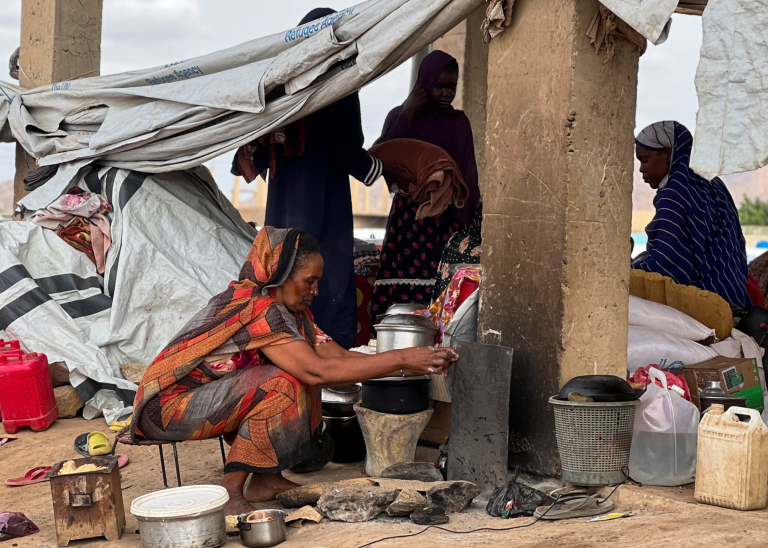
The “Resource Curse”—a paradoxical phenomenon where countries rich in natural resources suffer from economic stagnation, corruption, and conflict—has plagued nations like Nigeria, Angola, and the Democratic Republic of Congo (DRC). Yet, Botswana, a landlocked Southern African nation, stands as a rare exception.
Since gaining independence in 1966, Botswana transformed from one of the poorest countries in the world into an upper-middle-income economy, all while managing its diamond wealth responsibly. How did Botswana avoid the pitfalls that trapped so many other resource-rich African nations?
This article explores:
- Botswana’s economic transformation from poverty to prosperity.
- Key policies that prevented corruption and mismanagement.
- The role of leadership in sustaining good governance.
- Challenges Botswana still faces (inequality, diversification).
- Lessons for other African nations seeking to escape the Resource Curse.
See Nigeria’s Persistent Poverty Traps: A Paul Collier Analysis
1. Botswana’s Economic Miracle: From Poverty to Prosperity

A. Pre-Independence: A British Protectorate with Little Hope
- Botswana (then Bechuanaland) was one of the world’s poorest nations at independence (1966).
- No infrastructure, minimal education, and reliance on cattle farming.
- Discovery of diamonds (1967) could have led to chaos—instead, it fueled growth.
B. Post-Independence: Diamond-Driven Growth
- GDP per capita rose from $70 (1966) to $7,800 (2024).
- Consistent economic growth (average 5% annually for decades).
- No coups or civil wars—unlike many African resource-rich nations.
C. Botswana vs. Other Resource-Rich African Nations
| Metric | Botswana | Nigeria | Angola | DRC |
|---|---|---|---|---|
| GDP Growth | Stable (~5%) | Volatile | Oil-dependent | Conflict-ridden |
| Corruption | Low (Transparency) | High (EFCC cases) | Kleptocracy | Rampant graft |
| Diversification | Growing sectors | Oil-dependent | Oil-dependent | Mining chaos |
2. How Botswana Avoided the Resource Curse
A. Strong Institutions & Good Governance
- No rampant corruption: Botswana ranks least corrupt in Africa (Transparency International).
- Debswana (50-50 JV with De Beers): Ensured diamond profits benefited the state.
- Independent judiciary: Prevented authoritarianism (unlike Zimbabwe or Equatorial Guinea).
B. Fiscal Discipline & Smart Resource Management
- Pula Fund: Sovereign wealth fund saved diamond revenues for future generations.
- Avoided reckless borrowing: Unlike Zambia or Ghana, Botswana has low debt levels.
- Transparent budgets: Public trust in government spending.
C. Political Stability & Democratic Norms
- No military coups since independence.
- Peaceful transitions of power (even when ruling party dominates).
- Respect for term limits (unlike Museveni, Kagame, or Biya).
D. Investment in Human Capital
- Free education (literacy rate: 88%, one of Africa’s highest).
- Healthcare improvements: Life expectancy rose from 49 (1970) to 66 (2024).
- HIV/AIDS response: Once the worst-hit, now a model for treatment programs.
3. The Role of Leadership: Seretse Khama & Beyond
A. Sir Seretse Khama (First President: 1966–1980)
- Rejected personal enrichment, set a precedent for integrity.
- Established multi-party democracy (unlike one-party socialist states).
- Negotiated fair diamond deals with De Beers.
B. Quett Masire (1980–1998) & Continuity
- Economic diversification (beef, tourism, manufacturing).
- Avoided “Big Man” politics—focused on institutions.
C. Modern Challenges: Mokgweetsi Masisi’s Era
- Income inequality remains high (Gini coefficient: 53.3).
- Youth unemployment (~25%) threatens stability.
- Diamond dependence (need for tech & manufacturing growth).
4. Remaining Challenges: Is Botswana’s Model Sustainable?
A. Economic Diversification
- Still over-reliant on diamonds (30% of GDP, 80% of exports).
- Efforts in tourism, finance, and renewable energy are growing but slow.
B. Inequality & Unemployment
- Wealth gap between urban elites and rural poor.
- Need for private sector growth beyond mining.
C. Climate Change & Water Scarcity
- Droughts threaten agriculture (a key non-mining sector).
- Solar energy investments could be a solution.
5. Lessons for Other African Nations
A. What Worked in Botswana?
• Strong institutions over strongmen.
• Transparent resource deals (no “secret contracts”).
• Saving resource wealth (Pula Fund model).
• Investing in people (education, healthcare).
B. Replicable Policies for Other Countries
- Nigeria: Could adopt Botswana’s sovereign wealth fund (like Norway).
- DRC: Needs anti-corruption courts and fair mining deals.
- Angola: Should diversify beyond oil, as Botswana is trying with diamonds.
C. Warning: No “One-Size-Fits-All” Solution
- Botswana had low population density (easier governance).
- Ethnic homogeneity helped avoid tribal conflicts (unlike Nigeria or Kenya).
Conclusion: Botswana’s Blueprint for Africa
Botswana proves that the Resource Curse is not inevitable. With good leadership, strong institutions, and smart policies, African nations can turn mineral wealth into lasting prosperity. However, challenges like diversification, inequality, and climate change remain.
Final Question: Can other African nations replicate Botswana’s success—or will corruption and weak governance continue to hold them back?
Key Takeaways
- Leadership matters: Seretse Khama’s integrity set the tone.
- Institutions > Personal Rule: Democracy and transparency prevent kleptocracy.
- Save for the future: Botswana’s Pula Fund is a model.
- Invest in people: Education and healthcare fuel long-term growth.




